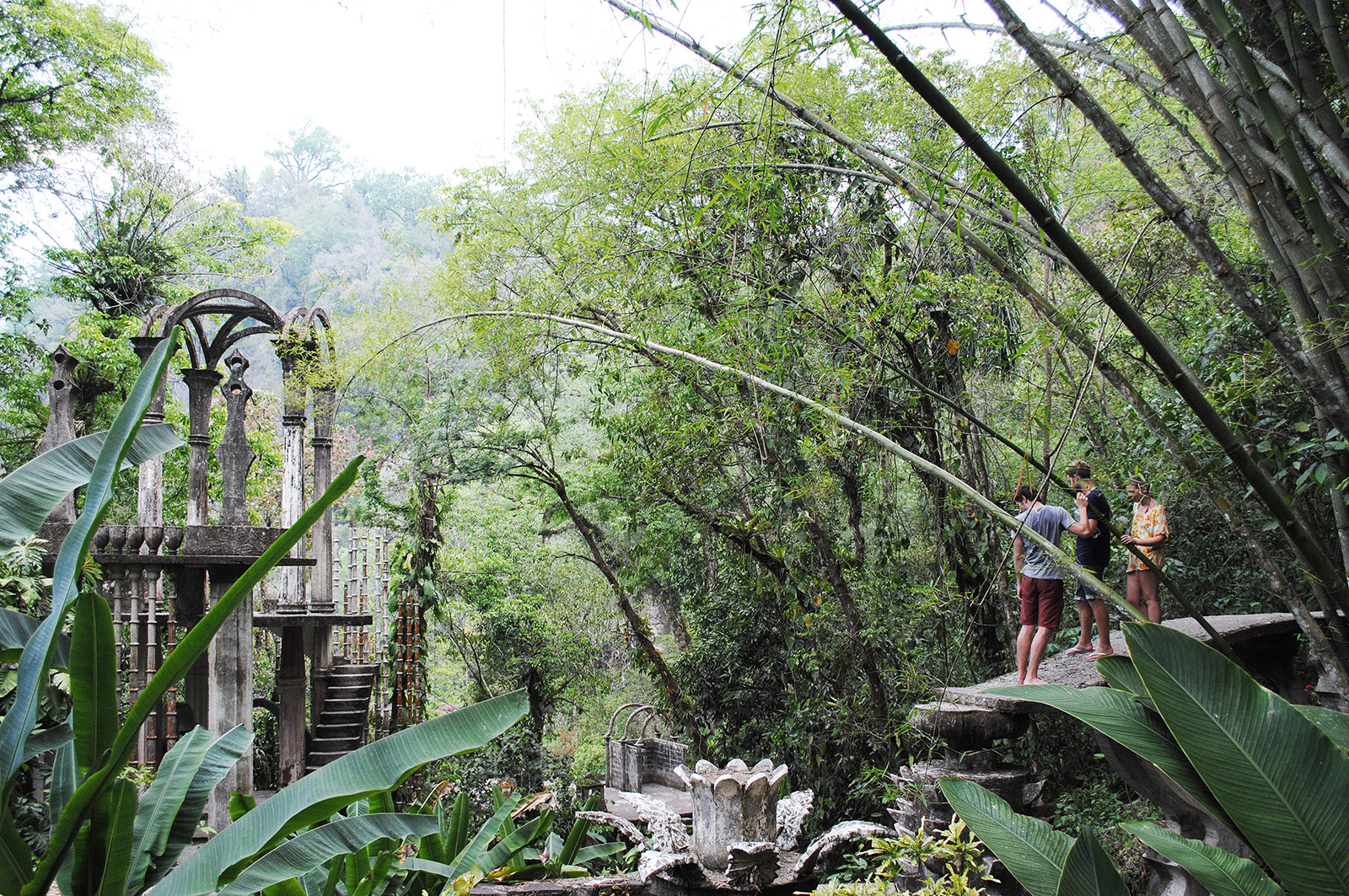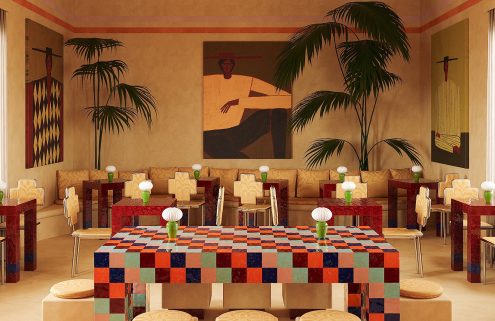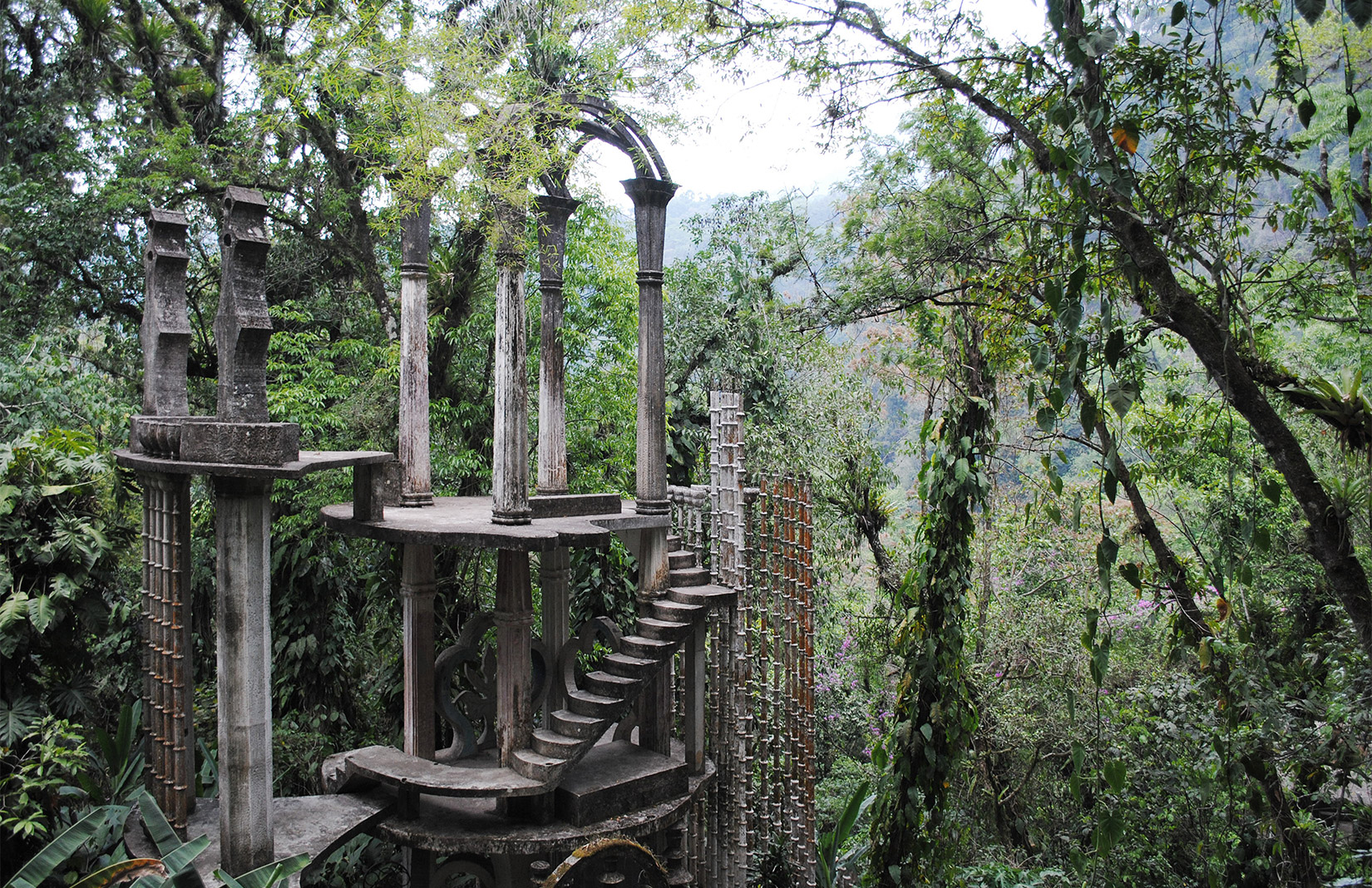Journalist Matthew O’Neil has travelled extensively across Latin America, but one particular spectacle – a concrete wonderland hidden deep in Mexican the jungle – remains etched on his memory. Salvador Dalí called its creator ‘crazier than all the Surrealists together‘. Here O’Neil takes us on a tour…
Walking among the concrete structures sprawled throughout the steamy La Huasteca rainforest, there is a sense that you’ve stepped into an Escher painting: a world of impossible objects that baffle and elude the mind. But there are other influences too. The wavy features and warped columns that adorn the serpentine paths, platforms and waterways owe much to the surrealist artwork of Yves Tanguy and Andre Bréton.
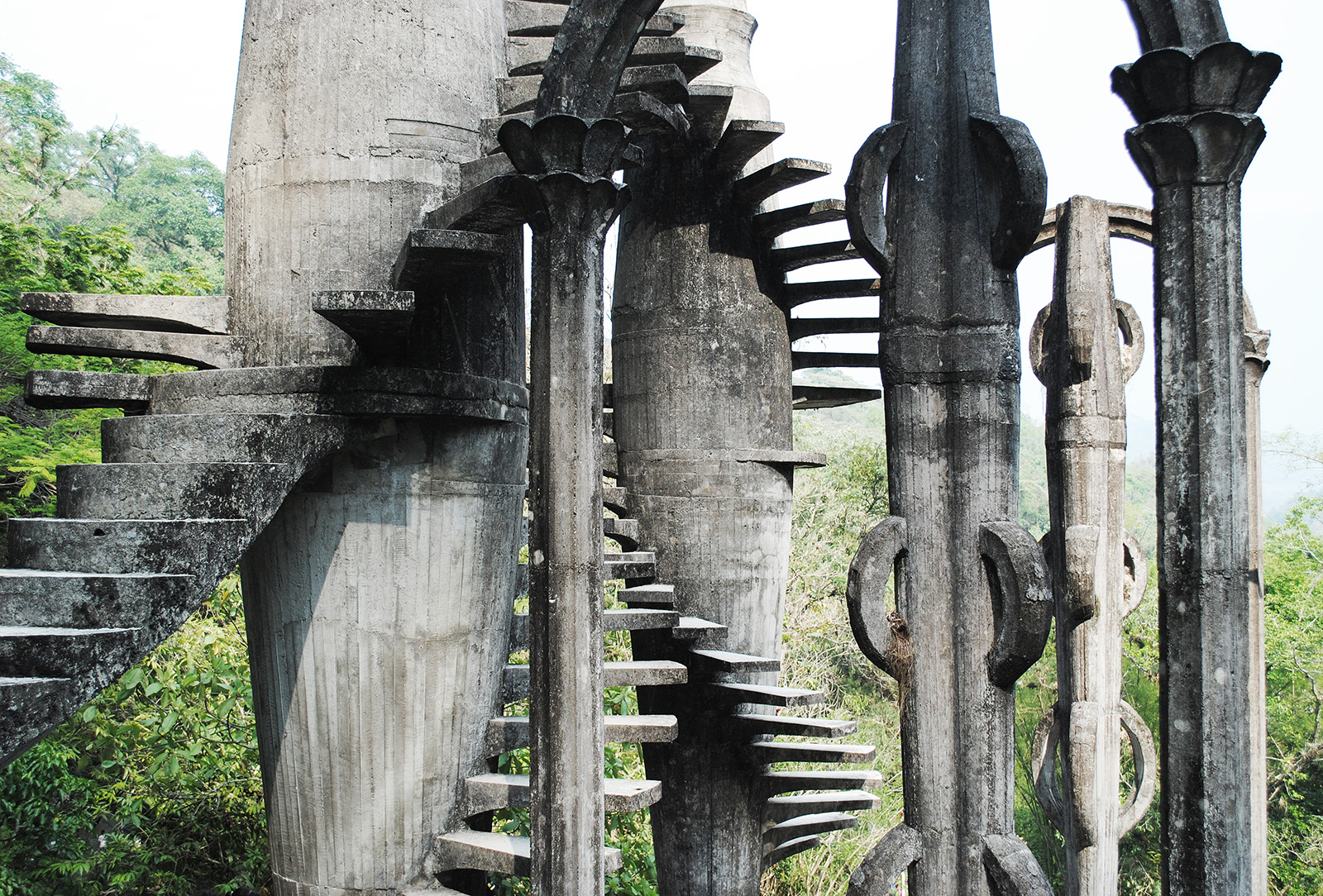
This is Las Pozas (‘the pools’), a labyrinthine arrangement of buildings, sculptures and trails, interlaced by natural streams and waterfalls, and spread out over more than 20 acres of lush tropical jungle. It is the creation of Edward James, an eccentric British poet and philanthropist, known for his patronage of Surrealist artists, including Salvador Dalí and René Magritte. It is a magical place.
James first arrived in Mexico in the early 1940s, in search of a location to build his own ‘Garden of Eden’ and indulge his esoteric interests. He and his Yaqui Indian guide, Plutarco Gastélum, came across Xilitla in 1945, a small town nestled on the eastern slopes of the Sierra Gorda mountain range. It was here on the village’s outskirts that James chose to build his sculpture garden.
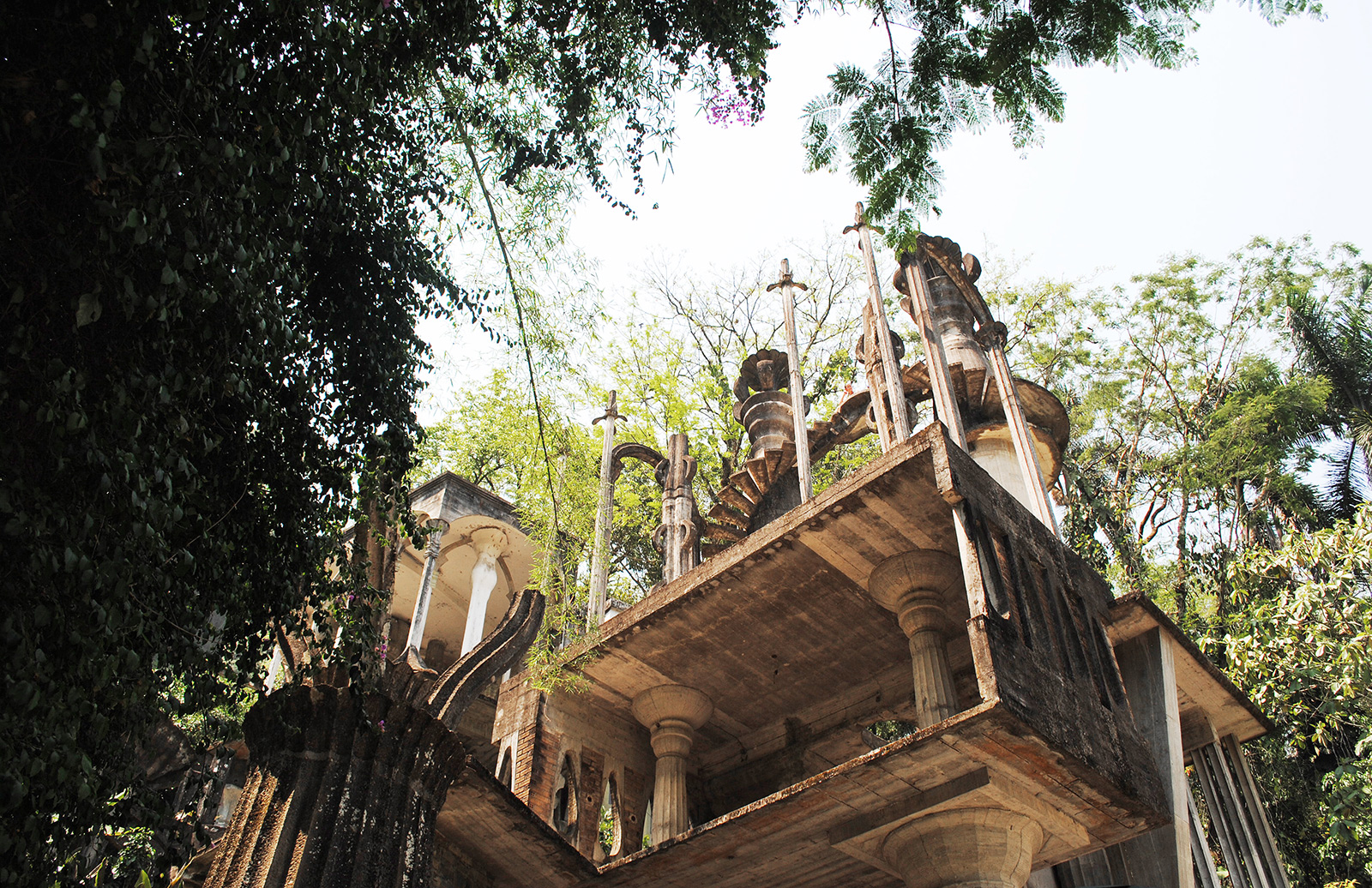
Construction took place between 1949 and 1984. It cost roughly $5 million to build, and required the labour of a small town. To pay for his project, James was forced to auction off his extensive collection of Surrealist art. But it was an investment well made. He spent long periods of time at Las Pozas throughout the rest of his life, bathing in its pools, writing poetry and tending to his collection of exotic plants and animals.
Construction at the site continued right up until James’ death in 1984, and today it is replete with unfinished edifices and spiralling staircases that lead to nowhere. Las Pozas languished for a number of years and saw few visitors, aside from some hippies and dedicated art aficionados. Even today, the garden lies far from the Gringo Trail.
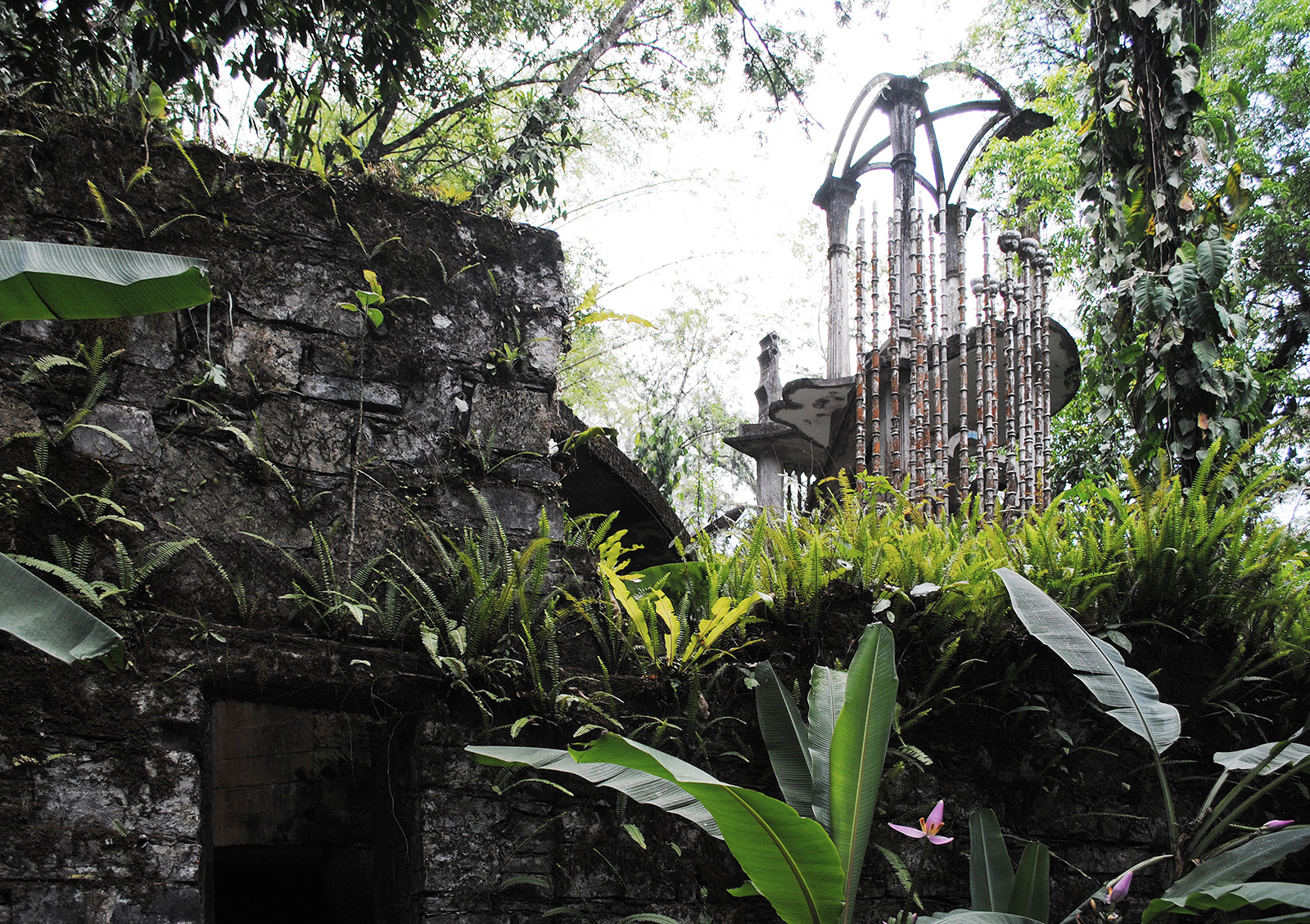
The property was acquired in 2007 by a foundation established with the help of (funnily enough) a cement conglomerate. Work soon began to restore the dilapidated site, and reclaim its unique concrete structures from the jungle.
Las Pozas is not the easiest location to access. Xilitla is far away from Mexico’s idyllic beaches and tourist hot spots, and as such, has minimal transport infrastructure. The journey involves a bumpy nine hour trip from Mexico City to Ciudad Valles – not the most charming of places – followed by a two-hour bus ride to Xilitla, and then a final leg along a dirt road.
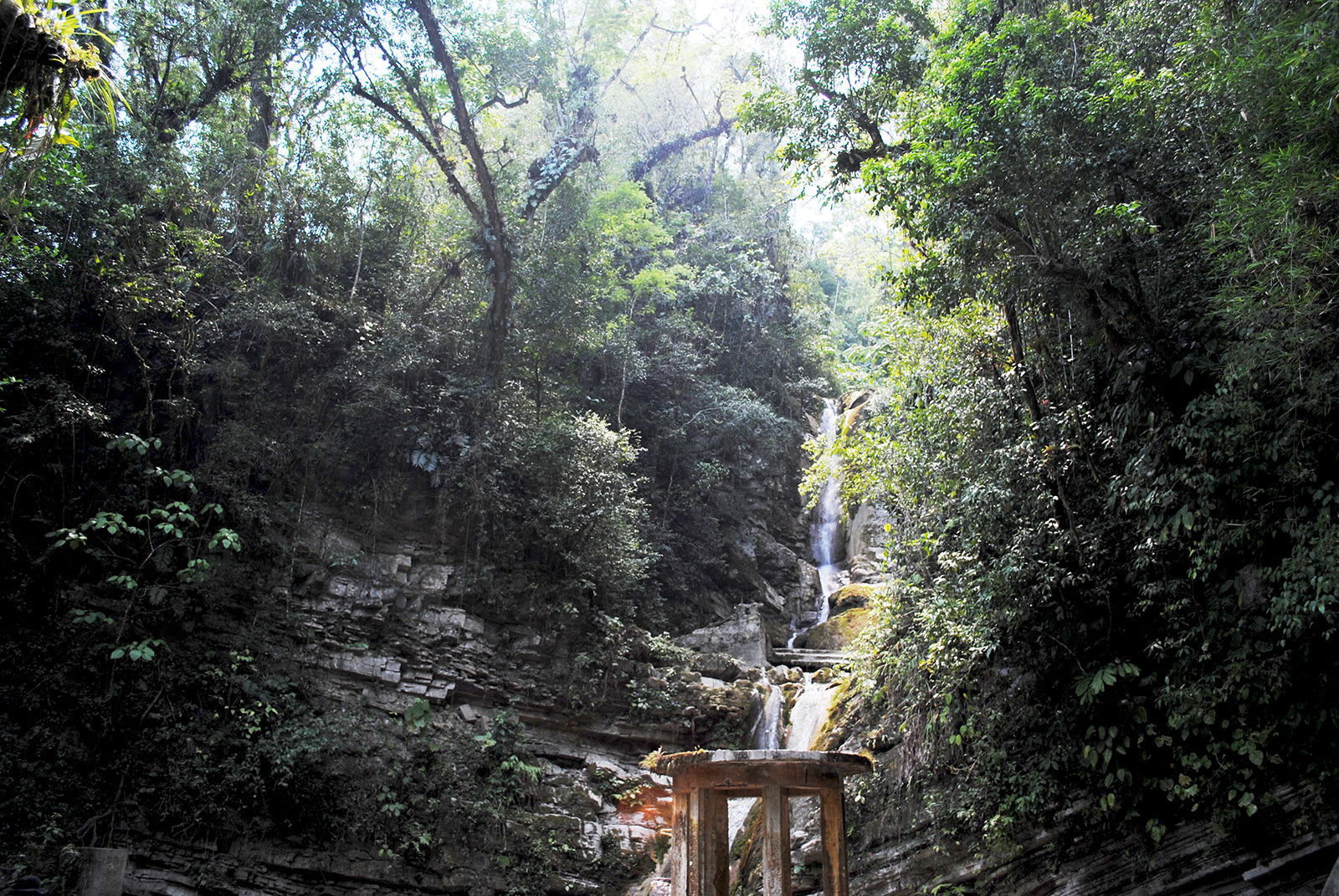
The relative isolation of Las Pozas means that it has avoided becoming inundated with backpackers and holidaymakers. Visitors are afforded far more liberty to explore the site than they are at other tourist attractions throughout Mexico. Guests have the freedom to scale the winding staircases that tower over the jungle canopy, or cool off in the pools and streams that snake their way throughout the site’s dramatic structures.
This opportunity to intimately engage with the world of Edward James in the tranquil La Huasteca rainforest makes a trip to his surrealist masterpiece a truly unforgettable experience.
